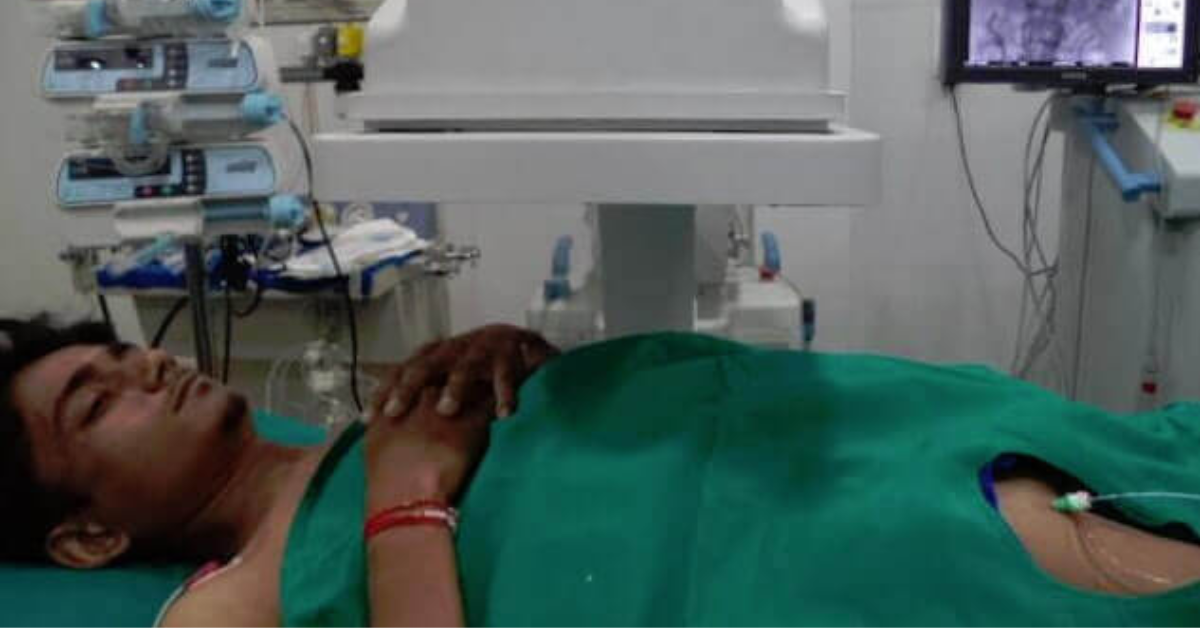Stem Cell Treatment India: A Revolutionary Approach to Healing and Regeneration
Stem Cell Treatment India has gained significant attention in recent years due to its potential to treat a variety of medical conditions that traditional treatments struggle with. From orthopedic injuries to neurodegenerative diseases, stem cell therapy offers hope for patients who have exhausted conventional treatment options. This article will explore the benefits, procedures, costs, and advantages of opting for stem cell treatment in India.
What is Stem Cell Treatment?
Stem cell treatment is an innovative medical therapy that utilizes the body’s stem cells to repair or regenerate damaged tissues and organs. Stem cells are unique because they have the potential to develop into different types of cells, such as muscle, nerve, or bone cells. This regenerative ability makes them an ideal solution for treating conditions where the body’s natural repair mechanisms are insufficient.
In India, stem cell treatment is gaining momentum due to advancements in medical research, state-of-the-art facilities, and experienced healthcare professionals. As a result, many patients from around the world travel to India for this groundbreaking therapy.
Types of Stem Cell Therapy in India
There are several types of stem cell therapies available in India, depending on the medical condition being treated. The most common forms of stem cell therapy include:
-
Autologous Stem Cell Therapy: This involves using the patient’s own stem cells for treatment, ensuring no risk of immune rejection. It is typically used in orthopedic treatments, skin regeneration, and wound healing.
-
Allogeneic Stem Cell Therapy: In this case, stem cells from a donor are used for treatment. This type is more commonly used in hematological disorders and certain neurological conditions.
-
Mesenchymal Stem Cell Therapy (MSC): MSCs are primarily used to treat joint and bone-related issues, such as osteoarthritis, as they can differentiate into bone, cartilage, and fat cells.
-
Hematopoietic Stem Cell Therapy: This therapy involves using stem cells that can regenerate blood cells. It is commonly used for treating blood-related diseases like leukemia and lymphoma.
-
Neural Stem Cell Therapy: This therapy involves using stem cells to treat conditions affecting the nervous system, such as Parkinson’s disease, multiple sclerosis, and spinal cord injuries.
Advantages of Stem Cell Treatment in India
-
Affordable Costs: One of the major advantages of opting for stem cell treatment in India is the cost-effectiveness. In comparison to Western countries, stem cell treatments in India are much more affordable without compromising on quality.
-
World-Class Healthcare Facilities: India is home to several internationally accredited hospitals and clinics offering advanced stem cell treatments. These facilities are equipped with the latest medical technology and provide top-notch care.
-
Highly Skilled Doctors: Indian doctors specializing in stem cell therapy have undergone rigorous training and possess expertise in treating a wide range of conditions. Many of them have gained international recognition for their work in regenerative medicine.
-
Minimal Waiting Time: Compared to countries like the US and the UK, there is significantly less waiting time for stem cell treatment in India. Patients can get prompt appointments, quick consultations, and immediate treatment.
-
Tourism and Recuperation: India is a top destination for medical tourism. After the stem cell procedure, patients can enjoy a recovery period while also exploring the country’s rich cultural heritage, making their trip a holistic experience.
Stem Cell Treatment Process in India
The stem cell treatment process in India typically follows a few key steps:
-
Consultation and Diagnosis: The first step involves an in-depth consultation with the doctor to discuss the patient’s medical history and current health condition. This is followed by a thorough diagnosis to determine if stem cell therapy is appropriate.
-
Stem Cell Harvesting: Depending on the type of stem cell therapy, stem cells are either harvested from the patient’s own body (autologous stem cells) or a donor (allogeneic stem cells). The harvesting process is minimally invasive, typically done through bone marrow extraction or fat tissue collection.
-
Stem Cell Processing: Once harvested, the stem cells are processed and concentrated in specialized laboratories before being injected into the patient’s body. The stem cells are usually administered through injections directly into the affected area, such as joints or the spinal cord.
-
Post-Treatment Care: After the treatment, patients are monitored closely for any side effects or reactions. Recovery periods can vary depending on the condition and the patient’s overall health.
-
Follow-Up Visits: Regular follow-up visits are essential to monitor the progress and assess the effectiveness of the treatment. Many patients experience gradual improvement over time, with some showing significant recovery within a few months.
Conditions Treated with Stem Cell Therapy in India
Stem cell therapy is considered for a variety of medical conditions, particularly those related to degenerative diseases and injuries. Some of the most common conditions treated include:
-
Orthopedic Conditions: Stem cell therapy is widely used for treating joint issues like osteoarthritis, cartilage damage, and tendon injuries. It can help reduce pain and improve mobility in affected joints.
-
Neurological Disorders: Stem cell treatments have shown promise in treating conditions such as Parkinson’s disease, Alzheimer’s disease, multiple sclerosis, and spinal cord injuries. These therapies aim to regenerate damaged nerve cells and improve cognitive and motor function.
-
Autoimmune Diseases: Conditions like rheumatoid arthritis and lupus can be treated with stem cell therapy to modulate the immune system and reduce inflammation.
-
Cardiovascular Diseases: Stem cells can aid in regenerating heart muscle cells, helping patients with heart disease, ischemic heart conditions, and heart failure.
-
Blood Disorders: Hematopoietic stem cell therapy is commonly used to treat blood-related disorders like leukemia, lymphoma, and sickle cell anemia.
-
Diabetes: Stem cell research is ongoing to explore the use of stem cells to regenerate pancreatic cells, which can help treat diabetes and insulin resistance.
-
Wound Healing: Stem cells play a crucial role in accelerating the healing of chronic wounds and burns by promoting tissue regeneration.
-
Aesthetic and Anti-Aging: Stem cell therapy is also used in aesthetic treatments, such as skin regeneration, hair restoration, and facial rejuvenation.
Cost of Stem Cell Treatment in India
One of the most significant factors driving the popularity of stem cell treatment in India is the cost. The cost of stem cell therapy in India is significantly lower than in countries like the US, the UK, and Canada. While prices vary depending on the type of therapy, the condition being treated, and the clinic’s location, the average cost for stem cell treatment in India ranges from $2,000 to $10,000, depending on the complexity of the procedure.
Risks and Considerations
While stem cell therapy is generally safe, there are some risks and considerations to keep in mind:
-
Side Effects: Some patients may experience mild side effects such as swelling, pain at the injection site, or fever. These usually subside within a few days.
-
Regulation and Standards: It is essential to choose a well-established, accredited clinic in India to ensure that stem cell treatments are carried out with the highest safety and ethical standards.
-
Success Rates: Success rates vary depending on the condition being treated, the patient’s overall health, and the type of stem cells used. It is important to have realistic expectations and understand that some conditions may require multiple treatments for significant results.
Stem Cell Treatment India FAQ
1. Is stem cell treatment available for all medical conditions in India?
While stem cell treatment is effective for many medical conditions, not all diseases can be treated with this therapy. It is best to consult with a doctor to determine if stem cell treatment is suitable for your condition.
2. How long does it take to recover after stem cell treatment in India?
Recovery time varies depending on the type of treatment and the patient’s condition. Most patients experience improvement within a few weeks to months. Follow-up visits are essential to track progress.
3. Is stem cell treatment safe in India?
Yes, stem cell treatments in India are generally safe when performed in accredited, well-established clinics. Ensure that the clinic follows strict medical standards and uses the latest technology.
4. What is the cost of stem cell treatment in India?
The cost of stem cell treatment in India varies depending on the condition being treated and the type of therapy used. On average, it ranges from $2,000 to $10,000.
5. Can I travel to India for stem cell treatment if I live abroad?
Yes, many patients from around the world travel to India for stem cell treatment due to the cost-effectiveness and quality of care. India has a robust medical tourism industry catering to international patients.
6. Are there any risks involved in stem cell therapy?
While stem cell therapy is generally safe, there are risks such as side effects at the injection site, mild pain, and swelling. It is important to choose an experienced doctor and clinic to minimize risks.
7. How do I choose the best clinic for stem cell treatment in India?
Research thoroughly to find a reputable, accredited clinic with experienced doctors and modern facilities. Read patient reviews, ask for testimonials, and check the clinic’s certifications before making a decision.
Conclusion
Stem cell treatment in India is an exciting and rapidly advancing field, offering a ray of hope to patients with conditions that conventional medicine cannot address effectively. With affordable prices, advanced technology, and highly skilled medical professionals, India has become a leading destination for stem cell therapy. If you are considering stem cell treatment, ensure that you choose a trusted clinic with the right expertise and resources to provide you with the best care possible.






